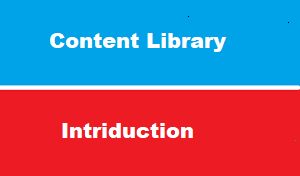introduction
as we are diving in vSphere Optimization & Scale course :this article we will discuss very important concept which called content library
what is content library
Content libraries are container objects for VM and vApp templates and other types of files, such as ISO images, text files, and so on.
You can use the templates in the library to deploy virtual machines and vApps in the vSphere inventory.
You can also use content libraries to share content across vCenter Server instances in the same or different locations.
Sharing templates and files results in consistency, compliance, efficiency, and automation in deploying workloads at scale.
A content library stores and manages content in the form of library items.
A single library item can consist of one file or multiple files.
For example, the OVF template is a set of files (.ovf, .vmdk, and .mf). When you upload an OVF template to the library, you upload the entire set of files, but the result is a single library item of the OVF Template type
content library types
Local Libraries
You use a local library to store and manage items in a single vCenter Server instance.
When you enable publishing for the library, users from other vCenter Server instances can subscribe to it and gain access to the library items.
In this case, only the subscriber initiates and controls the synchronization of content between the published library and the subscribed library.
If publishing is enabled, you can also create subscriptions to the local library.
Creating a subscription creates a new subscribed library or links the publisher library to an existing subscriber. Unlike regular subscribed libraries, subscriptions give the administrator of the local library control over the distribution of content library items.
Subscriber library
When you create a subscription for a local library, the result is a subscribed library.
A publisher library is aware of its subscriptions.
Subscriptions enable the administrator of the publisher library to control the content distribution. With subscriptions, content is distributed either when the subscriber initiates synchronization, or when the administrator of the local library publishes the library items to one or more of the existing subscriptions.
When you use subscriptions, you have the flexibility to decide how much of the library content you want to share with the subscribers. For example, you can publish some or all library items. You can also publish content to selected subscribers or to all subscribers.
The use of subscriptions allows content distribution between a publisher and a subscriber in the following scenarios.
- The publisher and subscriber are in the same vCenter Server instance.
- The publisher and subscriber are in vCenter Server instances that are in Enhanced Linked Mode.
- The publisher and subscriber are in vCenter Server instances that are in Hybrid Linked.
content library history
Content Library in vSphere 6.0
this was just the beginning for Content Library.
Item types allowed in vSphere 6.0 for Content Library were limited to
- OVF templates,
- ISOs, scripts,
- and text files.
When adding Virtual Machine templates (vmtx) to Content Library they were converted to OVF templates to be stored as Content Library
in vSphere 6.0 did not yet support VM Templates.
Content Library in vSphere 6.5
Content Library in vSphere 6.5 added a few minor enhancements.
- Support for the HTML5 version of the vSphere Client gave customers a consistent look and feel when using this newer client.
- Support for mounting ISOs from Libraries,
- updating of existing templates,
- and Guest Customization when deploying a VM from an OVF template was also introduced for Content Library
Content Library in vSphere 6.7
Today in vSphere 6.7, Content Library has evolved once again.
- VM Templates are able to be synchronized to other Content Libraries via the Publish feature.
- The publishing action from the local library will sync the VM template to the selected Subscriber Libraries.
- VMTX files are no longer converted to OVF to be stored within Content Library.
- This allows the ability to distribute content across vCenter Servers to avoid recreating VM template configurations on the other end.
Conclusion
in this article : we have got an overview about content library concept and its type beside historical review of evolution
next article : we will discuss how to create local content library and how to import items ,
also we will see how to create template in content library and how to create VM from that template

